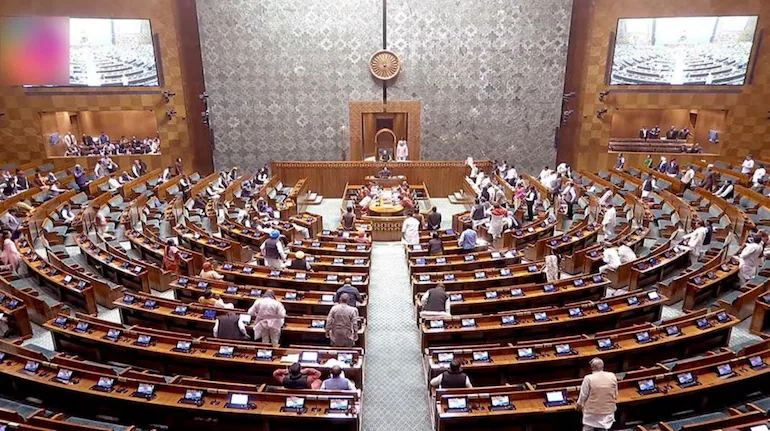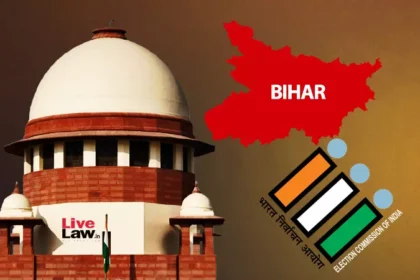Tracing the Evolution of India’s Income Tax System – From 1860 to 2025
A Sudden Policy Reversal
In a move that caught policy analysts and the business community by surprise, the Government of India has officially withdrawn the first version of the much-anticipated Income Tax Bill 2025. Confirmed by senior government sources and reported across national financial media, this legislative rollback signals both internal political recalibration and a broader recognition of the bill’s shortcomings. The decision has prompted nationwide debate, with experts weighing in on what the rollback means for India’s economy, middle-class taxpayers, and foreign investors.
Background: What Was the Income Tax Bill 2025?
The Income Tax Bill 2025 was introduced as part of the government’s broader roadmap to simplify, digitize, and reform India’s notoriously complex taxation system. Envisioned as a replacement for the older Income Tax Act of 1961, the new bill was expected to address inconsistencies, reduce compliance burdens, and bring Indian tax law in line with modern international standards. Initial drafts suggested sweeping changes in tax brackets, exemptions, capital gains treatment, and digital income tracking — all aiming at a fairer and more robust fiscal structure.
However, even before it could be tabled for discussion in Parliament, the bill was quietly withdrawn — citing the need for “further stakeholder consultation and legal refinement.” For many observers, the abrupt nature of this withdrawal has raised more questions than answers.
Initial Reaction: Confusion and Speculation
Following the news, political circles and business lobbies buzzed with speculation. Was the government reacting to political pressure from within? Did influential industrial groups lobby against proposed tax reforms that could increase their liability? Or was the public backlash—especially from salaried middle-class citizens—too severe to ignore?
Public sentiment on social media platforms and televised debates appeared divided. Some lauded the move, calling it a sign that the government was willing to listen. Others criticized the withdrawal as indecisiveness or an election-year gimmick designed to buy time and reduce political backlash.
Key Issues in the Withdrawn Draft
According to sources familiar with the draft, several contentious issues led to its withdrawal:
- Reduction in Exemptions: The draft proposed eliminating several popular exemptions and deductions that middle-class taxpayers rely on — such as deductions under Sections 80C, 80D, and housing loan interest.
- Capital Gains Restructuring: The treatment of short- and long-term capital gains was to be restructured, potentially increasing tax liability for retail investors and mutual fund holders.
- Digital Taxation Ambiguity: With India’s growing gig economy and digital workforce, the bill attempted to tax “non-conventional” income from online platforms — a move that was seen as premature and poorly defined.
- Lower Slab for High Earners: Ironically, while the bill was seen as burdensome for the middle class, some proposals allegedly favored ultra-high-net-worth individuals by introducing more lenient tax treatments for offshore income repatriation.
- Compliance Overload: Despite its stated goal of simplification, the bill introduced multiple new compliance norms, including quarterly income disclosures, real-time invoicing, and AI-based audit triggers.
The Political Equation: Internal Dissent and External Pressure
As Parliament’s monsoon session progressed, murmurs of dissent began surfacing from within the ruling coalition itself. State leaders, wary of electoral consequences, reportedly warned the central government against introducing disruptive tax reforms so close to the 2026 general elections. Furthermore, the finance ministry had not completed sufficient stakeholder engagement with major trade bodies like CII, FICCI, and industry-specific associations.
Simultaneously, opposition parties began mobilizing against what they termed a “tax on the salaried class and small businesses.” Rahul Gandhi, in a press statement, alleged that the bill was “anti-people and pro-billionaire,” adding further political heat to the issue.
A Pause, Not a Full Stop
The government’s decision to pull back the Income Tax Bill 2025 should not be seen as a final defeat for tax reform. Rather, it’s a pause — a strategic retreat to regroup, reassess, and relaunch with broader consensus. Whether this ends up being a smart political move or a missed policy opportunity will depend on how the revised version evolves.
In the next part, we will explore the historical evolution of income tax laws in India, how previous governments have handled similar pushback, and what lessons today’s administration can learn from past reform efforts.
The roots of India’s income tax system stretch back to 1860, when Sir James Wilson introduced the first Income Tax Act to help finance British military efforts after the Revolt of 1857. The initial system was basic, rudimentary, and designed solely to generate revenue for the colonial administration. Yet, it laid the foundation for a formal taxation regime in the Indian subcontinent.
Over the next several decades, income tax laws remained static, with minor modifications, primarily serving imperial interests rather than socio-economic equity. It wasn’t until independence that India began reimagining its taxation policies for nation-building.
Post-Independence Taxation: The Rise of the 1961 Act
In 1961, independent India took a significant step forward with the introduction of the Income Tax Act, 1961 — a comprehensive law that replaced all prior frameworks. This act formed the backbone of Indian direct taxation policy for decades. It covered income from salaries, business profits, property, capital gains, and other sources, while introducing slabs and deductions to create a degree of progressive taxation.
However, despite its wide scope, the act soon became a tangled web of amendments, notifications, exemptions, and judicial interpretations. By the early 2000s, many experts were calling for a complete overhaul.
The Case for Reform: Why a New Law Was Needed
The drive for reform didn’t emerge overnight. As India’s economy liberalized in the 1990s and diversified in the 2000s, the outdated 1961 framework began showing serious limitations:
- Complexity and Litigation: The existing law had grown into a labyrinthine structure filled with conflicting provisions. Tax disputes flooded tribunals and courts, making compliance unpredictable.
- Digital Economy Ignored: With the explosion of e-commerce, online freelancing, cryptocurrency trading, and digital gig work, the old law lacked provisions to tax such income transparently.
- Globalization and Double Taxation: India’s increasing economic integration with the world demanded better rules on cross-border transactions, transfer pricing, and bilateral treaties.
- Tax Base Erosion: Despite a population of over 1.4 billion, less than 7 crore Indians filed returns in 2024. The narrow base put immense pressure on the salaried class while allowing many high-earning professionals and businesses to escape scrutiny.
- Inefficiencies in Compliance: Frequent changes, ambiguous language, and outdated reporting structures made tax compliance a burden, especially for small and medium enterprises (SMEs).
Thus, a complete reset was long overdue, and the Income Tax Bill 2025 was expected to be that reset. But the abrupt withdrawal now raises questions about whether India is ready to face the political and administrative challenge of such a large-scale tax reform.
Comparative Global Models: What India Can Learn
India is not alone in struggling with tax reform. Countries like Brazil, Indonesia, and South Africa have also wrestled with inefficient legacy systems. However, many developed nations, such as New Zealand and Estonia, have successfully implemented simpler, more transparent models.
New Zealand: Known for its low compliance cost and near-flat tax rate, New Zealand removed nearly all tax exemptions and deductions in the 1980s, simplifying enforcement while boosting compliance.
Estonia: With a digital-first tax administration system, Estonia completes most citizen tax returns automatically and taxes only distributed corporate profits.
United States: Despite having one of the most complex systems, the U.S. updates tax codes periodically and prioritizes digital tax filing through IRS e-filing.
India’s challenge, however, lies in its massive informal sector, federal governance structure, and politically sensitive middle class — all of which require custom-tailored reforms.
Political Constraints: The Unseen Hand in Policy Formation
Tax reforms are never just technical exercises; they are deeply political. Every deduction removed or slab changed potentially affects millions of voters. As India nears crucial state elections and the 2026 Lok Sabha elections, the ruling government may be unwilling to alienate any substantial segment of its voter base.
Additionally, within the Parliament, tax reform bills require debate, consensus-building, and tactful negotiation — especially in the Rajya Sabha, where opposition parties may still hold influence. The government likely feared that pushing the bill without adequate buy-in could lead to parliamentary roadblocks and further polarize public opinion.
A Legacy of Complexity, A Future of Possibility
India’s income tax journey — from colonial policies to complex post-independence legislation — has always mirrored the country’s broader economic and political evolution. While the withdrawal of the Income Tax Bill 2025 may appear like a step backward, it also presents an opportunity: a chance to craft reform not in haste but with vision, consultation, and transparency.
The Salaried Class: Relief or Missed Opportunity?
India’s salaried workforce, comprising over 9 crore individuals, is often seen as the most compliant and overburdened group within the taxation framework. With TDS (Tax Deducted at Source) applied directly to monthly income, salaried individuals often have little room for negotiation, evasion, or deferral.
The Income Tax Bill 2025, based on its leaked drafts and consultations, was expected to introduce rationalized tax slabs, higher standard deductions, and possibly tax exemptions for remote work-related expenses — a significant shift considering the post-COVID hybrid workplace environment.
With the bill’s withdrawal:
- Short-term sentiment among salaried individuals is one of mixed relief. While some fear that new slab revisions could have pushed them into higher brackets, others are disappointed at the missed opportunity for greater deductions and simplicity.
- Long-term concerns remain over the rising effective tax burden due to stagnant exemption limits, inflationary salary hikes, and removal of earlier exemptions (like those under the New Tax Regime).
For now, the old regime continues — with its confusing choice between the Old and New Tax Regimes, leaving most salaried taxpayers in a dilemma every financial year.
Start-ups and the Digital Economy: A Cloud of Uncertainty
India’s start-up ecosystem, which has produced over 100 unicorns in the past decade, was watching the 2025 bill closely. Many expected it to address critical pain points:
- Angel Tax confusion
- Taxation of ESOPs (Employee Stock Ownership Plans)
- Crypto and digital asset taxation
- GST-credit reconciliation with income tax filings
With the bill now withdrawn, digital-first companies and crypto start-ups are left in limbo. Start-up founders who had lobbied for clarity and consistency in capital gains tax structures, especially for venture-backed enterprises, now worry about regulatory fragmentation.
Moreover, the lack of clarity on virtual digital assets (VDAs), combined with the existing 30% flat tax + 1% TDS on crypto trades, continues to stifle innovation and push talent toward more tax-neutral jurisdictions like Singapore or Dubai.
Investors and High-Net-Worth Individuals (HNIs): Strategic Pause
For India’s growing base of equity investors and HNIs, the proposed Income Tax Bill 2025 was expected to redefine:
- Capital gains taxation on short-term and long-term holdings
- Dividend taxation reforms
- Potential incentives for long-term SIPs and index investing
With the withdrawal, these stakeholders have adopted a strategic pause, suspending decisions related to portfolio restructuring until clarity emerges.
Notably, market behavior reflected this uncertainty:
- The Nifty 50 and Sensex showed mild corrections after initial reports of the bill’s withdrawal.
- Foreign Portfolio Investors (FPIs), always sensitive to taxation policy, issued advisories flagging regulatory risk.
The net outcome is a temporary cooling of investor sentiment, particularly around tax-advantaged financial instruments.
Small Business Owners and MSMEs: A Disappointed Majority
The Micro, Small, and Medium Enterprises (MSME) sector — contributing over 30% of India’s GDP — was eyeing the new bill for simplifications like:
- Unified reporting standards
- Standard presumptive taxation updates
- Elimination of overlapping GST and income tax filing compliance
Many small traders, shop owners, and home-based entrepreneurs were hoping the bill would reduce harassment by tax officers and shift compliance to a digital-first, faceless model.
The withdrawal has led to visible disappointment across chambers of commerce and trade federations like CAIT and FISME.
Worse, many regional business leaders now fear that half-baked digital audits under the old system may continue to plague small firms who lack the manpower or legal resources to challenge tax assessments.
State Governments: A Seat at the Table – Still Missing
While direct taxation is a central subject under the Constitution, state governments are heavily impacted by changes in tax structures. The Finance Commission’s formula for revenue distribution includes income tax as a key component.
With the 2025 bill withdrawn, some state finance ministers — especially from opposition-ruled states — have raised questions on:
- Lack of consultative federalism
- Potential revenue disruptions
- Absence of state-level impact assessments in national policy design
States like Kerala, Tamil Nadu, and West Bengal have long demanded more financial autonomy, and many were watching how the bill might impact revenue transfers via the Consolidated Fund of India.
Now, that debate has been kicked down the road once again.
Chartered Accountants and Tax Professionals: Back to the Old Grind
For India’s massive community of tax consultants, chartered accountants (CAs), and compliance professionals, a new income tax code would have meant both upskilling and transitional business opportunities.
However, the withdrawal means:
- Continued reliance on outdated provisions with hundreds of exceptions
- More litigation due to ambiguous case law
- Lower trust in long-term policy continuity
As a result, most CAs are advising clients to delay structural tax planning, avoid premature investment switches, and “wait until Budget 2026,” where a revised version may surface.
Everyone’s Watching, No One’s Moving
The withdrawal of the Income Tax Bill 2025 has had a cooling effect across the economic spectrum. From the salaried worker and small trader to investors and policymakers, the recurring theme is uncertainty.
India may have pressed pause, but the cost of delay is measured not only in rupees or lost investments but in credibility, confidence, and clarity — vital ingredients for any economic powerhouse in the making.
A Political Retreat or Tactical Pause?
The sudden decision to withdraw the Income Tax Bill 2025 has raised not only eyebrows in policy circles but also urgent whispers within the political establishment. Was this a failure of legislative planning — or a pre-election tactical retreat?
In parliamentary terms, withdrawing a bill isn’t uncommon. However, the Income Tax Bill 2025 was not just any legislation. It was heralded as a generational reset — the most ambitious reform of direct taxation since 1961.
But the Modi 3.0 government, despite its majority, opted for strategic withdrawal rather than forcing passage. The timing — bare months after a general election — is politically significant.
Sources suggest the Centre had intelligence that:
- The bill might alienate certain middle-income and small-business voters, especially if any new levies or tightening of exemptions were perceived.
- Several regional allies had expressed discomfort during the pre-budget consultations.
- The Rajya Sabha arithmetic, though numerically favorable, still posed a risk due to internal factionalism.
In short, the move appears to be politically defensive, aimed at avoiding controversy while the new administration consolidates power and prepares for key state elections later in the year.
Opposition’s Rhetoric: From “Rollback” to “Betrayal”
India’s opposition parties — especially the Congress-led INDIA bloc — seized upon the withdrawal as evidence of poor governance.
Prominent voices like Rahul Gandhi, Arvind Kejriwal, and Mallikarjun Kharge slammed the move as:
- A “betrayal of the middle class,” suggesting the bill’s shelving denies potential relief.
- A sign that the BJP is “fearful of scrutiny”, especially since the bill was never publicly tabled in full.
- An admission of failure, after repeated claims that a “simpler, fairer” tax regime was imminent.
Several opposition members in Parliament questioned why the government hyped the bill before elections but withdrew it quietly after. In their view, this “bait-and-switch” governance tactic has now become a pattern — bold announcements, but silent retractions under pressure.
This rhetoric, although predictable, is building political traction, especially among urban professionals who had hoped for tangible income tax relief post-election.
BJP’s Balancing Act: Reform vs. Realpolitik
The Bharatiya Janata Party (BJP) finds itself straddling two conflicting imperatives:
- Delivering on its promise of tax reform and economic modernization
- Avoiding voter backlash amidst price inflation, employment concerns, and a fragile global economic climate
While the Finance Ministry’s official statement attributed the withdrawal to “the need for further stakeholder consultation,” insiders suggest a more cautious roadmap is being redrawn.
Key BJP strategists are reportedly:
- Working to re-frame the bill into a modular format that can be passed in stages — beginning with high-consensus reforms like digital faceless assessments and dispute resolution mechanisms
- Considering targeted tax relief packages in upcoming state elections (like Maharashtra and Jharkhand) to offset criticism
- Preparing for a big-bang budget in 2026, which may offer a “version 2.0” of the income tax overhaul
The BJP’s underlying concern remains: no bold tax reform has ever won votes — but bad tax policy can certainly lose them.
Bureaucratic Fatigue and Institutional Bottlenecks
Beyond political considerations, another force contributed to the bill’s withdrawal: bureaucratic resistance.
Internal reports from the Ministry of Finance and CBDT indicate:
- Lack of internal consensus between the policy wing and enforcement departments
- Concerns over the readiness of digital infrastructure, especially for real-time audits, e-verification, and data reconciliation across departments
- Legal complexity in retiring hundreds of clauses from the Income Tax Act of 1961, many of which are currently under Supreme Court litigation
Veteran bureaucrats reportedly flagged that implementing the new bill by AY 2026–27 would have triggered mass confusion in assessments, especially when older cases from the pre-GST era are still being processed.
Thus, the administrative feedback likely played a significant role in the final political decision to pull back.
International Optics and Investor Perception
In the age of global capital flows, even domestic tax laws can shape foreign investor confidence. The Income Tax Bill 2025, when announced, had drawn cautious optimism from global chambers of commerce and rating agencies like Moody’s and S&P.
The withdrawal, however, has raised questions:
- Is India serious about structural reform?
- Is policymaking consistent and transparent?
- Will India always remain a “work-in-progress economy” when it comes to tax certainty?
Such sentiments, if left unaddressed, could impact foreign direct investment (FDI) inflows, particularly in sectors like fintech, e-commerce, and asset management — all highly sensitive to tax frameworks.
The government now has the task of managing optics carefully: reassuring global investors that the reform is delayed, not discarded.
The Road to 2026: What Happens Next?
Despite the withdrawal, there’s strong consensus among economists that the bill — or some form of it — will resurface in 2026.
Possible developments over the next 12–18 months include:
- A white paper on direct tax reform being floated for public feedback
- Formation of a new tax reform committee with independent experts, chartered accountants, industry leaders, and IT professionals
- Pilot rollouts of digital-first audit platforms, perhaps in select states
- Budget 2026 including a “Taxation Reboot Package” announced with maximum PR focus
In many ways, the withdrawal is simply the beginning of Act II, with the stage now being reset for a more politically calibrated re-introduction.








